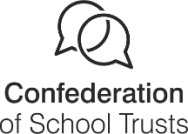Children across the UK are assessed in schools in a standardised way – this gives schools, local authorites and the Department of Education powerful data to help raise standards. Each stage of primary education is assessed and are broken down as follows:
Assessment
The New Foundation Stage Profile has 17 ‘Early Learning Goals’. The children are assessed as being either at the emerging, expected or exceeding assessment scales for each of these goals. At the end of EYFS a child is expected to achieve the Early Learning Goals. The ELGs are broken down as follows:
Prime areas of learning which are:
- Communication and Language – three goals
- Physical development – two goals
- Personal social and emotional development – three goals
Specific areas of learning which are:
- Literacy – two goals
- Mathematics – two goals
- Understanding of the world – three goals
- Expressive arts and design – two goals
At the end of EYFS if a child attains the expected level (or better) in all the prime areas (8 goals), literacy (2 goals) and mathematics (2 goals) they are described as being having a ‘Good Level of Development’. This would provide a very solid platform for the next stage of their education.
Pupils are assessed on entry (giving a baseline) and continually throughout their EYFS year. Communication with parents is key and gathering evidence to prove what stage a pupil is in relation to each goal is crucial.
The end of year report will breakdown each of the ELGs for parents.
Once pupils move in to KS1 they start a more formal stage of their education and are assessed in a variety of ways. Each assessment method allows teachers to give an accurate picture of the strengths and developmental needs of a child. Children spend two years in KS1 – Y1 and then Y2. In June, during a child’s time in Y1 they sit a Phonics Test to ascertain their abilities in this crucial area. In May of their time in Y2 pupils sit formal exams; these are known as standard assessment tests (SATs). Children sit tests to assess their reading, writing (including spelling and punctuation) and mathematics abilities.
Once leaving Y2 children move to KS2 where they spend four years until they make the step to secondary school.
Varied assessment continues and children sit formal exams in all year groups (Y3, Y4, Y5, Y6). At the end of Y6 pupils undertake SATs once more, in May to assess their abilities and knowledge before leaving primary school. The exams are in reading, spelling, punctuation, grammar and maths This information is vital for secondary schools as they aim to place pupils in appropriate sets in Y7 as children embark the next phase of their education.
Throughout the school year, we formally assess our children at children at specific points. This allows us to confidently track progress and ensure we are striving for all children to reach their potential.
As well as assessment for learning in the classroom, we use a range of other sources including Star Maths, Star Reading and Cornerstones Assessment Papers.
Please contact your child’s class teacher if you have questions about your child’s attainment and progress.






